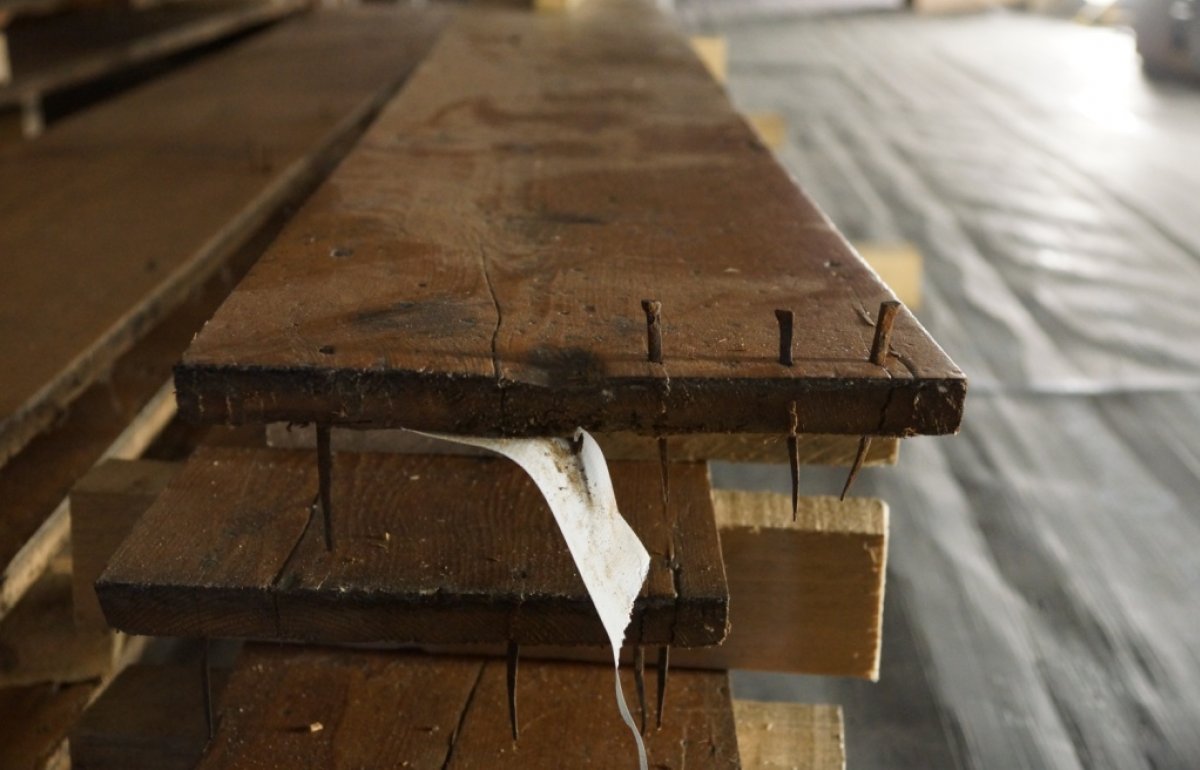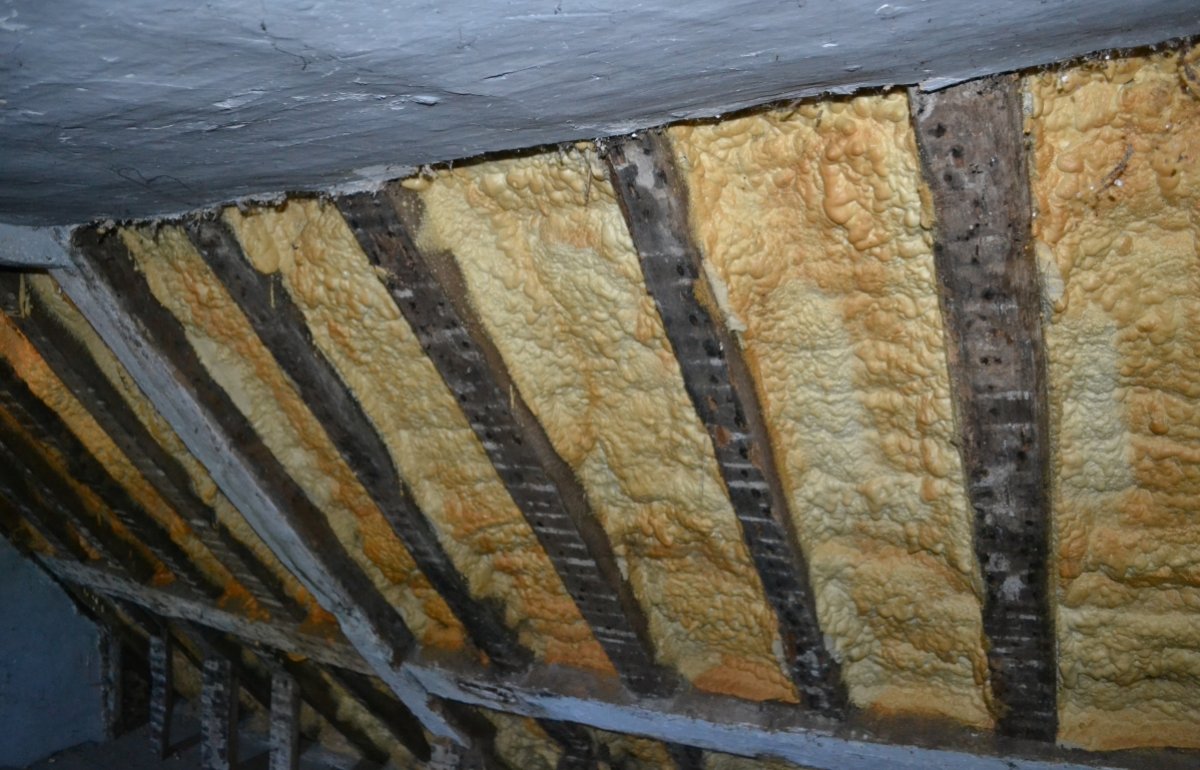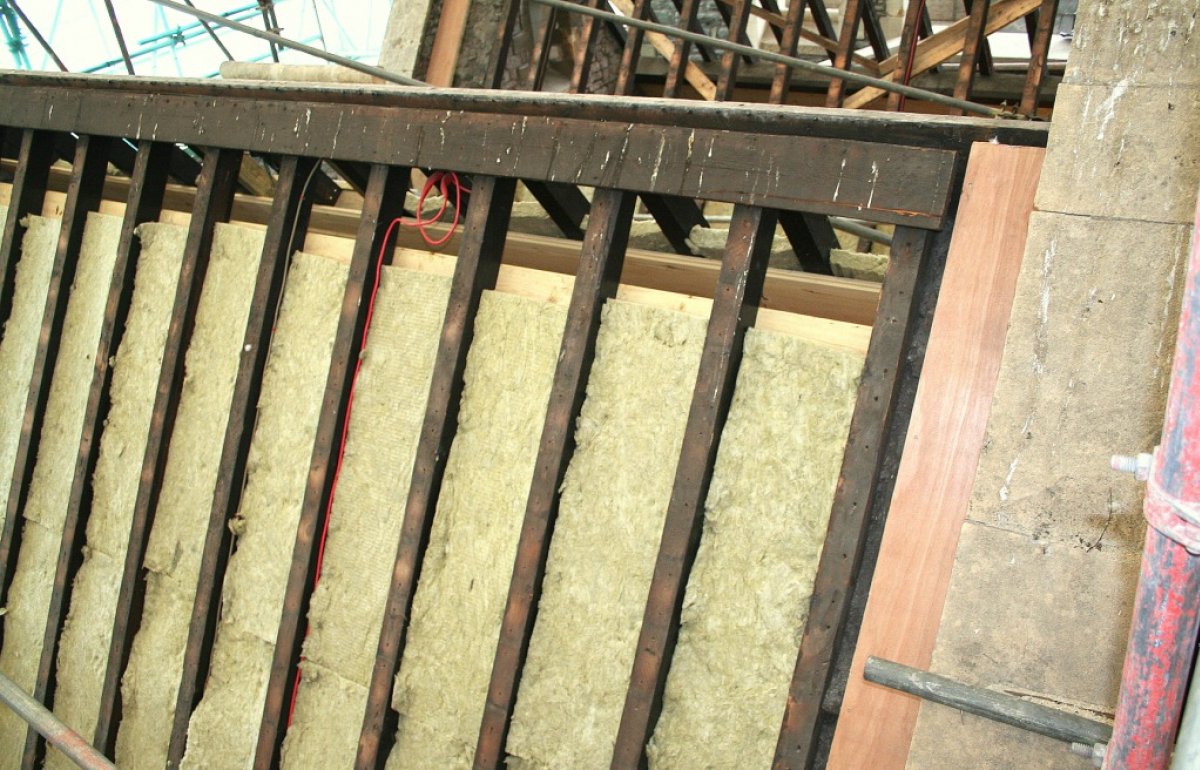Energy Efficiency and Old Buildings: Principles and Priorities
The SPAB has recently published the final report on its Building Performance Survey, our research aimed at assessing the risks associated with refurbishing traditional buildings. Additionally, Douglas Kent, SPAB Technical and Research Director, offers here some overarching advice on the principles and priorities to consider when thermally upgrading old buildings.
INTRODUCTION
Assessing the true sustainability of buildings involves looking at not just their heating costs but also the resources they consume throughout their whole lives. This includes the energy used in the manufacture (‘embodied energy’) and disposal of their components.
Old (pre-c1919) buildings are often constructed from materials with lower embodied energy than new ones. Components frequently also have longer lifespans and are easier to repair than their modern counterparts. Additionally, older buildings not uncommonly possess features conducive to good energy efficiency (such as thatched roofs, thick walls able to retain heat and release it gradually, and windows arranged to maximise daylight but minimise heat loss). Many old buildings adapt well to modern living requirements and are constructed of lime mortar and other materials that can be easily recycled.
Conserving rather than replacing old buildings can, therefore, be inherently sustainable. It could be argued that William Morris, the founder in 1877 of the SPAB – Britain’s oldest building conservation organisation – was one of the first to promote, albeit indirectly, the concept of sustainability! Nevertheless, those living in old buildings can frequently still do more to save energy. Improvements can usually be made, providing care is taken to avoid unintentional damage.
PRINCIPLES
The fundamental advice for anyone who cares for an old building is always to maintain it well and, where required, repair or upgrade its components using appropriate materials and techniques rather than replacing them. Misguided work may not only compromise the special interest of an old building but save little, if any, energy.
Instead of adopting a crude, blanket approach, such as replacing all old windows with double-glazed units, consider better-informed, targeted measures that accurately identify essential work. For example, air tightness tests by a suitable specialist can establish where heat really is escaping from a building and thereby pinpoint the areas that would benefit most from draughtproofing. Thermal imaging can be used either with or without air tightness tests to identify areas of heat loss.
Even if they are identified as a source of heat leakage, the replacement of old single-glazed windows that perhaps only need a little repair with new double-glazing that has a short, 30-year life (or less in many cases) is illogical – the embodied energy and lifespan of the new units negates the energy saving made while they are in service.
With all work to an old building, use compatible methods and materials – not just standard solutions that may work for more modern buildings. Most pre-1919 houses (including those that are unlisted) need to ‘breathe’. They are usually built of permeable, porous materials, which are often lime- or earth-based. Unlike modern buildings that depend upon cavities, barriers and membranes to keep water out, old buildings permit moisture to be absorbed by the fabric but evaporate back out – the ‘raincoat’ and ‘overcoat’ effects respectively. Well-intended but ill-advised energy efficiency measures, such as covering walls with impermeable materials or restricting ventilation too much, may cause condensation, promote rot and aggravate human health problems, including asthma.
PRIORITIES
It makes sense to adopt a step-by-step approach when contemplating improvements to the energy efficiency of an old building:
1 Maintenance. Many people focus on expensive high-tech solutions when thinking about making their homes greener but it’s best to start with practical, routine maintenance. Straightforward measures, such as regularly clearing out gutters, will stave off the decay and unnecessary replacement of building components. They will also prevent your walls becoming wetter and, therefore, less thermally efficient, as will the use of ‘breathable’ finishes, such as limewash rather than moisture-trapping plastic-based paints containing petrochemicals. Keeping windows and doors in good repair will reduce heat loss, too, while re-washering dripping taps cuts down on water wasted.
2 ‘Quick wins’. After addressing maintenance, concentrate next on ‘quick wins’ – measures that can be implemented easily, have a short payback and cause little disturbance to the fabric of an old building. Draught-proof your windows, doors (covers can be provided for letterboxes and keyholes) and floorboards. Chimney balloons can be used to stop heat loss via flues that are not in use. Add heavy curtains, shutters or secondary glazing (ie panes that go inside your existing windows). It makes little sense, of course, to attempt to improve insulation levels in a building if draughts have not been properly addressed! Next ensure your loft is well insulated, including pipework and the access hatch. Other quick wins could involve lagging your hot water cylinder, fitting thermostatic radiator valves and low-energy light fittings, installing a water butt for garden purposes and placing water-saving devices in lavatory cisterns.
3 Major work. More significant work that could be justified might entail upgrading your boiler and heating system (maybe changing to a renewable fuel source) or, in certain circumstances, reinstating a missing lime render or rainscreen (such as vertical tiling or weatherboarding) on a wall suffering from rainwater penetration. Bear in mind, however, that some work that may be suitable for a modern building can be extremely detrimental to an older one, especially if it inhibits the evaporation of moisture. Unfortunately, this may include items recommended on an energy performance certificate (EPC) because the software inadvertently discriminates against older, c1919 buildings. When contemplating major work to save energy in an old building, therefore, seek the advice of a suitably qualified professional. The SPAB may be able to advise on the names of suitable specialists in your area over its technical advice line (details below).
Last but not least, don’t forget that sustainable living is about an entire attitude of mind. Try, therefore, to take a holistic view that takes into account the whole building and how you can improve the way you use it – throw on a thick jumper instead of turning up the heating, air dry rather than tumble dry washing, keep your central heating at reasonably even temperatures, and, of course, turn off electrical appliances and lights. Where available, obtain materials locally to limit transport distances and cut pollution. In the end, human activities, not buildings, consume energy.
Further Reading:
A good source of information on thermally upgrading older (ie pre-1919, solid-walled) buildings is the Old House Eco Handbook by M Suhr and R Hunt in association with the SPAB, available to buy in our shop.
The SPAB has also published a Briefing on Energy Efficiency in Old Buildings, available to download for free.
The results of the SPAB’s research into the risks associated with refurbishing traditional buildings for better energy efficiency (our Building Performance Survey) are published online.
See also for detailed advice on energy conservation prepared by Historic England in association with the SPAB and other organisations. Additional advice is available from Historic Environment Scotland and Cadw.
The Sustainable Traditional Buildings Alliance (STBA) has produced a helpful guidance wheel that depicts more than fifty measures that can be used when renovating old buildings.



